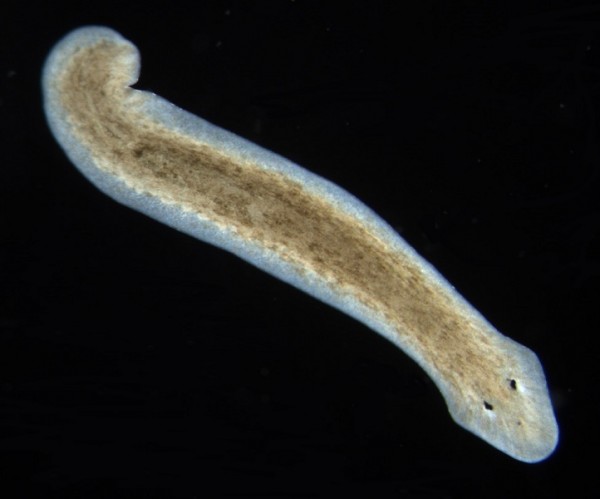How Flatworms Grow Heads and Brains of Other Species
| Ana Verayo | | Nov 25, 2015 06:30 AM EST |
(Photo : Wikipedia) Scientists can manipulate flatworms to grow heads and brains of other species using electrical synapses in the body.
Biologists have successfully grown one species of flatworm with a new head and brain of another flatworm species, without disturbing its genome sequence as researchers only manipulated the electrical synapses found inside the worm's body.
Researchers from Tufts University reveal in this new study how large scale anatomy is not entirely linked in the genome where this can also be affected by physiological circuitry outside the genes of flatworms.
Like Us on Facebook
According to senior author of the study, Michael Levin, more often than not, the chromatin's sequencing and structure which is the material that makes up chromosomes, can determine the shape of an organism however, these new results show how physiological networks can override the default anatomy of a species.
During the experiments, the researchers have chosen the Girardia dorotocephala, which is a species of flatworm with advanced regeneration abilities. In order to induce this head change, the team made an interruption in the electric signals as they travel through the protein channels in cells. Researchers discovered that the head did not just change its shape but also the brain shape and the stem cells were now altered in the worm.
Apparently, this was easier done if the G. dorotocephala was closer to the evolutionary timeline, providing clues how physiological circuitry can play a crucial role during the evolutionary process.
Researchers also revealed that after the experiments, the changes made to the worm were not permanent. After a few weeks, the worms returned back to their original head shapes, where all was reverted back to their normal states.
Scientists have grown different heads on worms to gain better understanding about birth defects and regeneration capabilities. According to author of the study, Maya Emmons-Bell, this demonstrates how electrical connections between cells can provide important information for the patterning of the head during a regeneration process in planarian flatworms, shedding light to regenerative medicine and evolutionary biology.
This new study is published in the International Journal of Molecular Sciences.
Tagsflatworms, flatworms grow heads and brains other species, Regeneration, evolutionary biology, flatworm, flatworms grow heads and brains, flatworm genome, Girardia dorotocephala, flatworm head regeneration
©2015 Chinatopix All rights reserved. Do not reproduce without permission
EDITOR'S PICKS
-

Did the Trump administration just announce plans for a trade war with ‘hostile’ China and Russia?
-

US Senate passes Taiwan travel bill slammed by China
-

As Yan Sihong’s family grieves, here are other Chinese students who went missing abroad. Some have never been found
-

Beijing blasts Western critics who ‘smear China’ with the term sharp power
-

China Envoy Seeks to Defuse Tensions With U.S. as a Trade War Brews
-

Singapore's Deputy PM Provides Bitcoin Vote of Confidence Amid China's Blanket Bans
-

China warns investors over risks in overseas virtual currency trading
-

Chinese government most trustworthy: survey
-

Kashima Antlers On Course For Back-To-Back Titles
MOST POPULAR
LATEST NEWS
Zhou Yongkang: China's Former Security Chief Sentenced to Life in Prison

China's former Chief of the Ministry of Public Security, Zhou Yongkang, has been given a life sentence after he was found guilty of abusing his office, bribery and deliberately ... Full Article
TRENDING STORY

China Pork Prices Expected to Stabilize As The Supplies Recover

Elephone P9000 Smartphone is now on Sale on Amazon India

There's a Big Chance Cliffhangers Won't Still Be Resolved When Grey's Anatomy Season 13 Returns

Supreme Court Ruled on Samsung vs Apple Dispute for Patent Infringement

Microsoft Surface Pro 5 Rumors and Release Date: What is the Latest?










